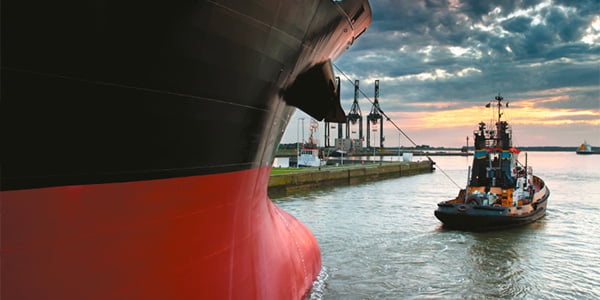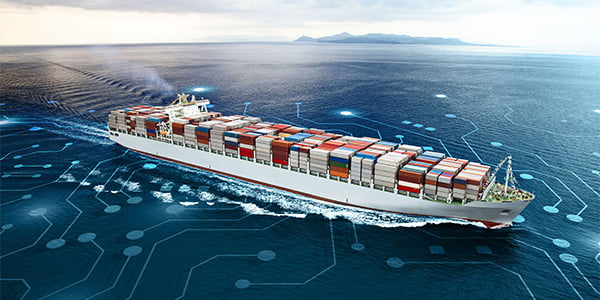Marine Navigation Systems
Empower Your Vessel’s Safe and Efficient Transit
with Integrated Navigation Solutions
Get a quote todayDefinition & Benefits
A marine navigation system is an integrated suite of hardware, software, and methodologies designed to chart, monitor, and control a vessel’s passage across all maritime environments—from confined inland waterways to the open ocean. By combining GPS, radar, electronic chart plotters, compasses, and sensor feeds, these systems deliver:
- Accurate Positioning & Routing – Real-time geolocation and optimised route planning to reduce fuel consumption and voyage time.
- Enhanced Situational Awareness – Overlays of radar, AIS targets, depth data, and ENC information on a unified display help engineers spot hazards early.
- Regulatory Compliance – Supports ECDIS requirements, IMO carriage rules, and flag-state mandates to prevent detentions and fines.
- Operational Efficiency – Automated waypoint management and autopilot integration frees up the crew for higher-value tasks, reducing human error and fatigue.

Installation & Integration
Site Survey & System Design: Evaluate bridge layout, power availability, and cable routes. Select optimal hardware footprint and redundancy schemes.
System Integration & Commissioning: Link GPS, radar, AIS, depth sounders, and other sensors into a unified bridge network. Calibrate compasses, align radar overlay with ENCs, and test autopilot handoff.
Hardware Mounting & Cabling: Install radomes, antennas, chart plotters, and compasses with marine-grade mounts. Run shielded NMEA 2000/0183 and Ethernet wiring per class-approved standards.
Training & Documentation: Hands-on sessions for bridge officers and engineers. Full operational manuals, wiring diagrams, and maintenance schedules.
Network Configuration: VLAN segmentation for navigation and operational data. Secure firewall and VPN policies to protect against cyber threats.
Equipment & Components
- GPS Receivers & Antennas – Single-board or multi-constellation GNSS modules for sub-meter accuracy.
- Radar Systems – X-band for high-resolution targets; S-band for all-weather performance; optional Doppler for collision alerts.
- Electronic Compasses – Fluxgate, ring-laser gyro, or satellite compasses for precise heading data.
- Chartplotters & ECDIS – High-resolution displays running ENCs with dynamic updates, route planning, and overlay capabilities.
- AIS Transponders – Class A/B units for vessel identification and traffic management.
- Sensors & Interfaces – Depth sounders, speed logs, wind instruments, and environmental sensors with NMEA connectivity.
Cost Expectations
Investment varies by vessel size, system complexity, and certification scope. For a precise assessment, get a tailored quote that factors in your vessel’s bridge configuration, redundancy needs, and class-society requirements. As a guideline:
- Basic Standalone Suite: $5,000–$15,000
- Mid-Tier Integrated Bridge Package: $15,000–$50,000
- Full Integrated Bridge System (IBS): $50,000+
Ensure the optimal balance between system capabilities, compliance, and cost.
Functionality & Features
- Route Planning & Weather Routing – Automatic course optimisation using ENC data and meteorological forecasts.
- Waypoint Management – Create, store, and edit waypoints for automated track-keeping via autopilot.
- Sensor Overlays – Radar and AIS targets are directly overlaid on chart displays for unified situational awareness.
- Autopilot Integration – NMEA-based commands for hands-off steering along predefined routes.
- Software Updates & Cybersecurity – Remote patching capabilities and hardened network protocols to protect critical systems.

Regulatory & Compliancce
ECDIS Carriage Requirements – Meets IMO’s SOLAS mandates for mandatory ECDIS on certain vessel classes.
Class-Society Approvals – Installation and testing protocols aligned with DNV, ABS, Lloyd’s Register, and other authorities.
Spectrum & EMC Standards – Certified to ITU-R and IEC EM-emission and susceptibility thresholds.
Cybersecurity Guidelines – IEC 61162-460 and industry best practices for maritime network security.
FAQS
What’s the difference between a standalone navigation unit and an Integrated Bridge System?
Standalone units (GPS, chart plotter, radar) operate independently and suit smaller vessels, while an IBS centralises all navigation and control functions for larger ships, offering enhanced automation and situational awareness.
How often should I update Electronic Navigational Charts (ENCs)?
ENCs should be updated monthly or according to the update schedule issued by your hydrographic office to ensure the latest safety information and chart corrections.
Can I integrate third-party sensors (e.g., wind, depth) into my navigation system?
Yes. Modern systems support standard NMEA 0183/2000 interfaces, allowing seamless integration of environmental sensors and custom instrumentation.
What power redundancy is recommended for critical navigation equipment?
We recommend dual-bus power feeds with UPS backup for primary units (ECDIS, radar, compass) to maintain operation during generator transitions or power faults.